X
wikiHow is a “wiki,” similar to Wikipedia, which means that many of our articles are co-written by multiple authors. To create this article, 12 people, some anonymous, worked to edit and improve it over time.
This article has been viewed 129,671 times.
Learn more...
A pig with swine pneumonia needs good care, quickly. The pneumonia can be caused by bacteria, viruses, chemicals (manure gas), extreme temperatures, stress, or parasites and it impacts the lower respiratory tract of the pig. Here is how to care for a pig with swine pneumonia.
Steps
-
1Check for symptoms of pneumonia. Unfortunately, many symptoms of pneumonia don't show in pigs until the situation is life-threatening. Any sign of going off food during winter should be treated as an early warning to consider with great care. Symptoms of pneumonia in a pig include:[1]
- Disinterest in food, loss of appetite, picky eater. (Number one worry sign.)
- Coughing.
- Lying down (sick pigs will usually lie down while other pigs are up and about).
- A dull appearance.
- Thumping (shallow, rapid breathing).
- Fever and lethargy.[2]
-
2Take the pig's temperature. Anything over 101ºF is a fever in a pig, and pneumonia ranges from 102ºF to 104ºF at the start. The temperature is taken through the rectum;[3] for tame, pet pigs this may be an approachable task but for larger pigs that do not have regular human contact, this is an affair that should be approached with caution. Pigs are very strong and can cause severe injuries.Advertisement
-
3See the vet swiftly. Your pig will need a course of antibiotics or "antibacterials" and the sooner the treatment begins, the better the pig's chances of survival.[4] The vet may prescribe these as injections or feed-given.
-
4Keep the pig in a warm and dry place for recovery. Keep the pig well fed and ensure that the pig receives the full antibiotics course.[5]
-
5Prevent a relapse and protect other pigs from catching pneumonia by taking proper precautions. Things to consider include:[6]
- Removing any sources of stress from the pigs' environment.
- Ventilating the pigs' housing adequately, without creating draughts.
- Preventing overcrowding.
- Keeping pigs warm during severe cold weather.
- Keeping pigs wormed and drenched against internal parasites.
- Speak with your vet about developing a management plan for the herd if your pigs continue to get pneumonia. All pigs and piglets at risk of contracting pneumonia should be vaccinated against the possibility.
Advertisement
Community Q&A
-
QuestionWhat medication can I give to pigs that have lost their appetite?
 Community AnswerI don't know about medication, but I would recommend mixing marshmallows and dry cake batter with a little bit of water. That usually gets pigs to eat because they like the sweetness.
Community AnswerI don't know about medication, but I would recommend mixing marshmallows and dry cake batter with a little bit of water. That usually gets pigs to eat because they like the sweetness. -
QuestionWhat can I do if my pig was treated for pneumonia and he has blood coming out of his nose when he coughs? He he is acting fine and eating.
 Community AnswerThis is a question for the veterinarian who takes care of your animal, not the internet. If you wish for your pig to get better, contact the animal clinic where it was treated for pneumonia.
Community AnswerThis is a question for the veterinarian who takes care of your animal, not the internet. If you wish for your pig to get better, contact the animal clinic where it was treated for pneumonia. -
QuestionWhat is a pig's average body temperature?
 LilyCommunity AnswerThe average body temperature of a pig is 38.7-40 degrees C/104 degrees F.
LilyCommunity AnswerThe average body temperature of a pig is 38.7-40 degrees C/104 degrees F.
Advertisement
Warnings
- Recovered pigs and piglets will often have lung tissue damage (permanent tissue loss), which can mean recurrent health problems for their remaining life.[9]⧼thumbs_response⧽
Advertisement
Things You'll Need
- Warm, dry recovery environment
- Veterinary assistance
- Antibiotics
- Thermometer suitable for pigs
References
- ↑ Trisha Fisk, Practical Smallfarming in New Zealand, p. 175, (2009), ISBN 978-0-14-301089-0
- ↑ The Merck/Merial Manual for Pet Health (Home Edition), p. 981, (2007), ISBN 978-0-911910-99-5
- ↑ https://licking.osu.edu/sites/licking/files/imce/Program_Pages/4H/Swine%20Health%20Recommendations.pdf
- ↑ https://www.msdvetmanual.com/respiratory-system/respiratory-diseases-of-pigs/mycoplasmal-pneumonia-in-pigs
- ↑ https://agrilifecdn.tamu.edu/victoriacountyagnr/files/2010/07/Swine-Pneumonia.pdf
- ↑ Trisha Fisk, Practical Smallfarming in New Zealand, p. 175, (2009), ISBN 978-0-14-301089-0
- ↑ The Merck/Merial Manual for Pet Health (Home Edition), p. 981, (2007), ISBN 978-0-911910-99-5
- ↑ The Merck/Merial Manual for Pet Health (Home Edition), p. 981, (2007), ISBN 978-0-911910-99-5
- ↑ The Merck/Merial Manual for Pet Health (Home Edition), p. 981, (2007), ISBN 978-0-911910-99-5
About This Article
Advertisement

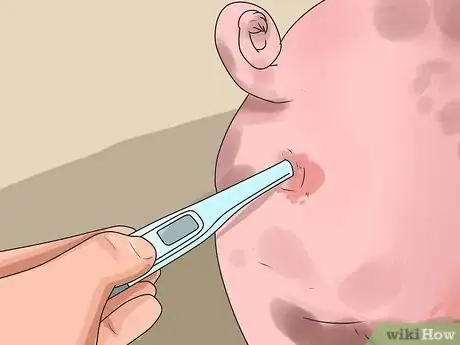
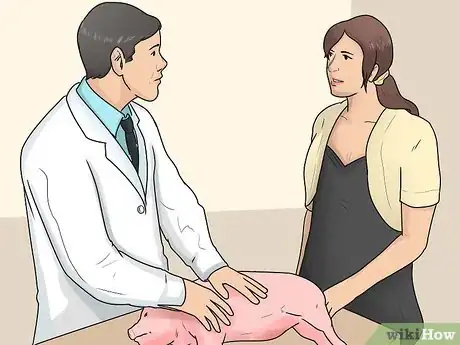
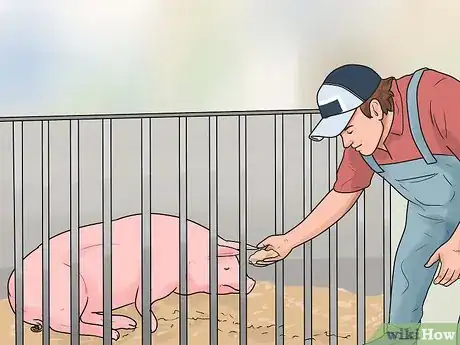

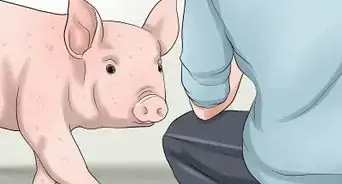


















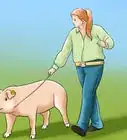




































Medical Disclaimer
The content of this article is not intended to be a substitute for professional medical advice, examination, diagnosis, or treatment. You should always contact your doctor or other qualified healthcare professional before starting, changing, or stopping any kind of health treatment.
Read More...